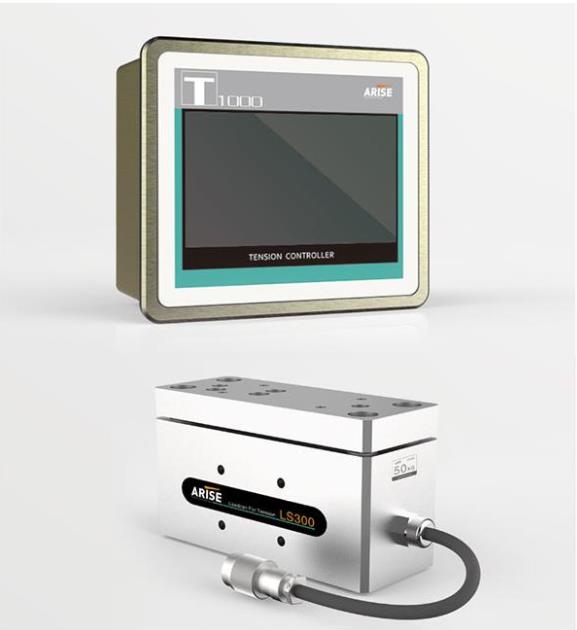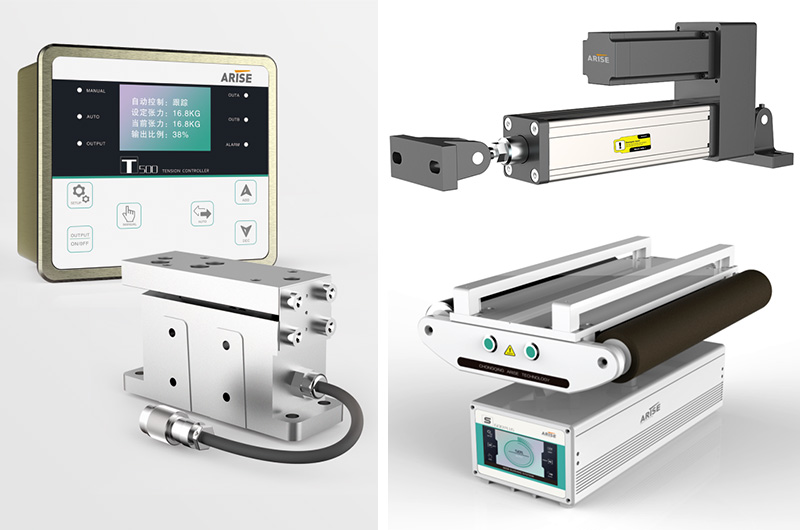Tension control systems stand as linchpins in ensuring seamless material movement through labeling and packaging machinery, catering to a spectrum of industries. With the ability to maintain uniform tension, they safeguard against damage and uphold the quality of packaged goods. In this exploration, we unravel the intricacies of tension control systems, their critical importance, applications, and the transformative innovations driving the industry forward.

Deciphering Tension Control Systems
Mechanisms: Tension control systems are meticulously designed mechanisms tasked with regulating material tension during packaging. They meticulously manage speed and torque of crucial components like rollers, brakes, clutches, and motors, ensuring precise control over material handling.
Objective: The paramount objective of these systems lies in sustaining consistent tension levels throughout the packaging process, irrespective of material thickness, speed variations, or environmental factors. By upholding this uniformity, manufacturers circumvent issues like wrinkling, tearing, or label misalignment, thereby enhancing product quality and bolstering brand reputation.
Crucial Role in Labeling Machinery
1. Precision Label Placement: Tension control systems orchestrate labels' feeding at the precise speed and tension, facilitating accurate placement on products or packaging surfaces. This precision is instrumental in maintaining brand consistency and effectively conveying essential information.
2. Prevention of Label Damage: By exerting control over tension levels, these systems avert label stretching or distortion during application, preserving their integrity. This ensures labels adhere smoothly, devoid of wrinkles or creases, thereby enhancing product aesthetics.
3. Minimization of Production Waste: Consistent tension control curtails material waste by preventing misaligned or damaged labels. This reduction in rework mitigates production costs associated with discarded materials, driving overall efficiency and profitability.
4. Optimized Production Efficiency: With precise tension control, labeling machinery operates at optimal speeds without compromising label quality. This maximizes throughput, ensures a steady production flow, and augments overall efficiency and output.
5. Compliance and Regulatory Standards: Tension control systems facilitate adherence to regulatory standards and industry requirements, ensuring labels comply with labeling laws governing product information, safety warnings, and other mandatory elements.
6. Enhanced Brand Image: Consistently well-applied labels contribute to a positive brand image and consumer perception. Tension control systems play a pivotal role in maintaining label consistency and quality, fostering brand trust and loyalty.
Applications Across Packaging Machinery
1. Web Handling: Essential for guiding flexible materials (webs) through packaging machinery, tension control systems maintain consistent tension, averting wrinkles, tears, or misalignment.
2. Bagging and Pouching: These systems regulate packaging material tension during forming, filling, and sealing processes, crucial for achieving tight seals and preventing spillage or contamination.
3. Wrapping and Sealing: Vital in wrapping machines, tension control systems ensure even application of shrink films or stretch films around products, maintaining integrity during transportation and storage.
4. Cartoning: Employed to manage carton blanks or packaging materials' tension, these systems produce neatly folded and securely sealed cartons.
5. Case Packing and Palletizing: Tension control systems ensure packaging materials are applied with the right tension, maintaining product stability and integrity during transportation and storage.
6. Converting Processes: Utilized in various converting processes like slitting and cutting, these systems ensure precise control over material tension levels, minimizing waste and maintaining product quality.
Innovations Driving the Industry Forward
1. Advanced Sensor Technology: Incorporating real-time feedback tension sensors, modern tension control systems offer greater accuracy and sensitivity, allowing for finer adjustments and control over the packaging process.

2. Integrated Servo Drives: Revolutionizing tension control, integrated servo drives offer precise control over motor speed and torque, enabling synchronized operation and optimal tension management.
3. Intelligent Control Algorithms: Sophisticated algorithms optimize tension levels based on material properties, machine speed, and environmental conditions, minimizing errors and maximizing efficiency.
4. Web Guiding Systems: Utilizing sensors and actuators, web guiding systems detect and correct deviations in web alignment, preventing edge damage and ensuring precise tensioning.
5. Cloud-Based Connectivity and Data Analytics: Offering remote monitoring and analysis, cloud-based systems enable proactive maintenance, predictive analytics, and performance optimization.
6. User-Friendly Interfaces: Featuring intuitive controls and graphical displays, modern interfaces allow operators to monitor tension levels, adjust settings, and troubleshoot issues with ease.

In Conclusion
Tension control systems represent the backbone of the labeling and packaging industry, ensuring precision, efficiency, and reliability at every turn. As manufacturers navigate an evolving market landscape, embracing innovative tension control technologies becomes paramount. By harnessing these advancements, manufacturers can position themselves for success, delivering superior products and maintaining a competitive edge in the industry landscape.




